
In Greek mythology, the Graeae, also called the Grey Sisters and the Phorcides, were three sisters who had gray hair from their birth and shared one eye and one tooth among them. They were the daughters of the primordial sea gods Phorcys and Ceto and, among others, sisters of the Gorgons and the Hesperides. Their names were Deino (Δεινώ), Enyo (Ἐνυώ), and Pemphredo (Πεμφρηδώ). The Graeae are best known from their encounter with Perseus, who, after capturing their eye, forced them to reveal information about the Gorgons.

The Gorgons, in Greek mythology, are three monstrous sisters, Stheno, Euryale, and Medusa, said to be the daughters of Phorcys and Ceto. They lived near their sisters the Graeae, and were able to turn anyone who looked at them to stone. Euryale and Stheno were immortal, but Medusa was not and was slain by the hero Perseus.
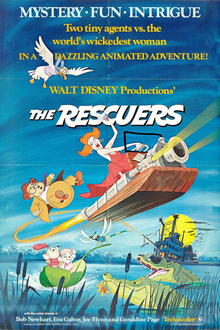
The Rescuers is a 1977 American animated adventure comedy-drama film produced by Walt Disney Productions and released by Buena Vista Distribution. Bob Newhart and Eva Gabor respectively star as Bernard and Bianca, two mice who are members of the Rescue Aid Society, an international mouse organization dedicated to helping abduction victims around the world. Both must free 6 year old orphan Penny from two treasure hunters, who intend to use her to help them obtain a giant diamond. The film is based on a series of books by Margery Sharp, including The Rescuers (1959) and Miss Bianca (1962).

In Greek mythology, Perseus is the legendary founder of the Perseid dynasty. He was, alongside Cadmus and Bellerophon, the greatest Greek hero and slayer of monsters before the days of Heracles. He beheaded the Gorgon Medusa for Polydectes and saved Andromeda from the sea monster Cetus. He was the son of Zeus and the mortal Danaë, as well as the half-brother and great-grandfather of Heracles.

Medusa: Dare to Be Truthful is an American 1991 mockumentary film starring comedian Julie Brown as the title character, with Kathy Griffin and Donal Logue in supporting roles. Comedians Tom Kenny and Bobcat Goldthwait and game show host Wink Martindale also made cameo appearances in the film.
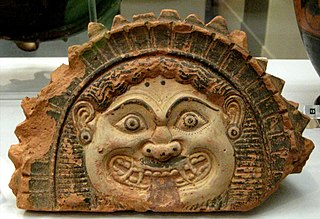
In Greek mythology, Medusa, also called Gorgo or the Gorgon, was one of the three Gorgons. Medusa is generally described as a woman with living snakes in place of hair; her appearance was so hideous that anyone who looked upon her was turned to stone. Medusa and her Gorgon sisters Euryale and Stheno were usually described as daughters of Phorcys and Ceto; of the three, only Medusa was mortal.
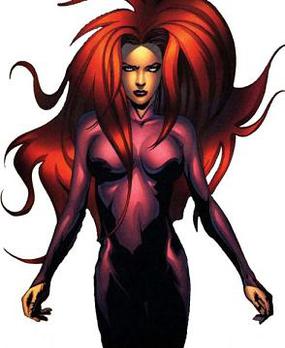
Medusa is a character appearing in American comic books published by Marvel Comics. Created by Stan Lee and Jack Kirby, the character first appeared in Fantastic Four #36 (1965).

The Raft of the Medusa – originally titled Scène de Naufrage – is an oil painting of 1818–19 by the French Romantic painter and lithographer Théodore Géricault (1791–1824). Completed when the artist was 27, the work has become an icon of French Romanticism. At 491 by 716 cm, it is an over-life-size painting that depicts a moment from the aftermath of the wreck of the French naval frigate Méduse, which ran aground off the coast of today's Mauritania on 2 July 1816. On 5 July 1816, at least 150 people were set adrift on a hurriedly constructed raft; all but 15 died in the 13 days before their rescue, and those who survived endured starvation and dehydration and practiced cannibalism. The event became an international scandal, in part because its cause was widely attributed to the incompetence of the French captain.
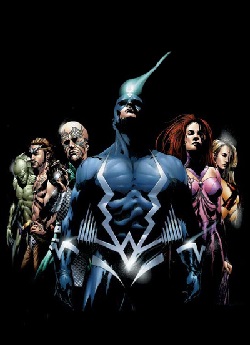
The Inhumans are a superhuman race of super beings appearing in American comic books published by Marvel Comics. The comic book series has usually focused more specifically on the adventures of the Inhuman Royal Family, and many people associate the name "Inhumans" with this particular team of superpowered characters.

Gorgon is a character appearing in American comic books published by Marvel Comics. Gorgon is also a member of the Royal Family of the Inhumans, a race of superpowered beings that inhabit the hidden city of Attilan.

Medusozoa is a clade in the phylum Cnidaria, and is often considered a subphylum. It includes the classes Hydrozoa, Scyphozoa, Staurozoa and Cubozoa, and possibly the parasitic Polypodiozoa. Medusozoans are distinguished by having a medusa stage in their often complex life cycle, a medusa typically being an umbrella-shaped body with stinging tentacles around the edge. With the exception of some Hydrozoa, all are called jellyfish in their free-swimming medusa phase.

Two versions of Medusa were created by Michelangelo Merisi da Caravaggio, one in 1596 and the other in ca. 1597. Both depict the moment from Greek mythology in which the Gorgon Medusa is killed by the demigod Perseus, but the Medusas are also self-portraits. Due to its bizarre and intricate design, the painting is said to display Caravaggio's unique fascination with violence and realism. The Medusa was commissioned by the Italian diplomat Francesco Maria del Monte, who planned to gift the commemorative shield to Ferdinando I de' Medici and have it placed in the Medici collection. It is now located in the Uffizi Museum in Florence without signature.

Medusa, formerly known as Bizarro, is a steel roller coaster located at Six Flags Great Adventure in Jackson Township, New Jersey. Manufactured by Bolliger & Mabillard, the ride debuted as the world's first floorless roller coaster on April 2, 1999. It was repainted and rethemed to Bizarro in 2009. In 2022, it was repainted and renamed back to Medusa.

Medusa peppers are a type of sweet, ornamental chili pepper which grow upright, brightly colored fruit, and which are long and thin, producing a "hair of snakes" look suggestive of the gorgon Medusa in Greek mythology.

The harpē (ἅρπη) is a type of sword- or sickle-like weapon mentioned in Greek and Roman sources, and almost always in mythological contexts.

SMS Medusa was a member of the ten-ship Gazelle class of light cruisers that were built for the German Kaiserliche Marine in the late 1890s and early 1900s. The Gazelle class was the culmination of earlier unprotected cruiser and aviso designs, combining the best aspects of both types in what became the progenitor of all future light cruisers of the Imperial fleet. Built to be able to serve with the main German fleet and as a colonial cruiser, she was armed with a battery of ten 10.5 cm (4.1 in) guns and a top speed of 21.5 knots. Medusa served in all three German navies—the Kaiserliche Marine, the Reichsmarine of Weimar Germany, and the Kriegsmarine of Nazi Germany—over the span of over forty years.

Medusa is a marble sculpture of the eponymous character from the classical myth. It was executed by the Italian sculptor Gian Lorenzo Bernini. Its precise date of creation is unknown, but it is likely to have been executed in the 1640s. It was first documented in 1731 when presented to the Palazzo dei Conservatori in Rome, and is now part of the collections of the Capitoline Museums.

Medusa is a c.1618 painting by the Flemish painter Peter Paul Rubens, showing the severed head of Medusa. The snakes in the painting have been attributed to Frans Snyders. Frans Snyders also helped Peter Paul Rubens with his work Prometheus Bound, where he painted the eagle portrayed in it. It is in the collection of the Kunsthistorisches Museum in Vienna. Another version is held in Moravian Gallery in Brno. Rubens was not originally attributed to the painting. Medusa was a popular iconographic symbol at the time due to the interest in Greek mythology by numerous Baroque artists such as Rubens and Caravaggio. The use of Medusa as a symbol has evolved over the course of centuries and has various interpretations of the iconographic meaning, with Rubens' painting based on an interpretation of the Greek mythological story of Medusa.
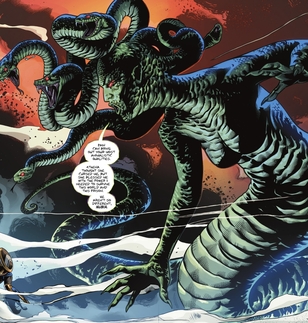
Medusa is a supervillain appearing in DC Comics publications and related media, commonly as a recurring adversary of the superhero Wonder Woman. Based upon the eponymous Greek mythological figure whose story was chronicled in Ovid's Metamorphoses, she is a snake-haired Gorgon with the ability to turn living creatures to stone with her gaze. Since her debut in 1964, Medusa's physical appearance has been presented variously as DC Comics' continuities have shifted and evolved. Though she has routinely been depicted with snakes for hair, she has sometimes been shown as bipedal and sometimes with a serpentine lower body. However across continuities, she has consistently been written with the ghostly ability to possess or influence other beings after her physical body has been killed, as well as an uncanny capacity for resurrection after death. Her characterization has been that of a dangerous immortal creature who is at turns both vengeful and sympathetic.

In Greek mythology, Stheno and Euryale were two of the three Gorgons, along with Medusa, sisters who were able to turn anyone who looked at them to stone. When Perseus beheaded Medusa, the two Gorgons pursued him but were unable to catch him.



















